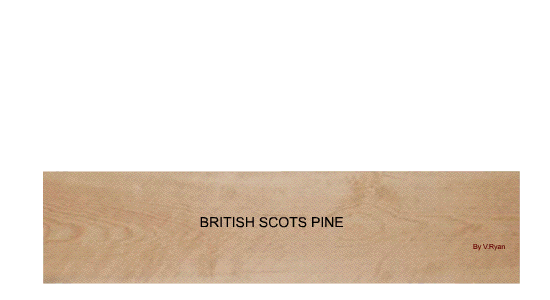| CLICK HERE FOR INDEX PAGE | |
| BRITISH SCOTS PINE | |
| V. Ryan © 2008 | |
| Pinus sylvestris Family: Pinaceae Commercial names: Red deal or ‘red’ if imported from Europe (northern UK); yellow deal or ‘yellow’ (southern UK). Timber grown in the UK is called Scots pine. Baltic, Finnish, Swedish, Polish etc., redwood or yellow deal according to country of origin. Other names: Norway fir, Scots fir (UK); Red pine (Scotland). Distribution: Europe, UK, Scandinavia and Russia. |
|
 |
|
| General Description: The wide
geographical range of this species provides varying strength, texture,
densities, number and size of knots etc. When dry, the heartwood colour is
pale reddish brown, and resinous. The annual rings clearly marked by
contrasting light earlywood and darker latewood zones. The weight is an
average 510 kg/m3 (32lb/ft3); specific gravity 0.51. Mechanical Properties: The species has low stiffness and resistance to shock loads, and medium crushing strength. UK timber has medium bending strength; European material has low bending strength. The UK material is 20% harder on the side grain and tougher, and from 15–30% more difficult to split. It has a very poor steam bending classification. Working Properties: The timber works easily and well with both hand and machine tools; can be stained, painted, varnished or polished satisfactorily. Gluing can be troublesome in very resinous material. Durability: Non-durable, susceptible to insect attack. The heartwood is moderately resistant to preservative treatment, but the sapwood is permeable. Uses: The best grades are used for furniture, joinery and turnery, vehicle bodies, and generally for building construction, carcassing, railway sleepers etc. |
|
| CLICK HERE FOR NATURAL WOODS IN DETAIL | |
| CLICK HERE FOR RESISTANT MATERIALS INDEX PAGE | |